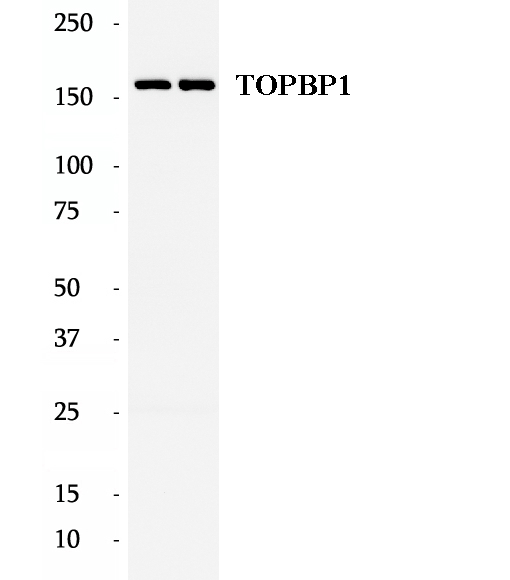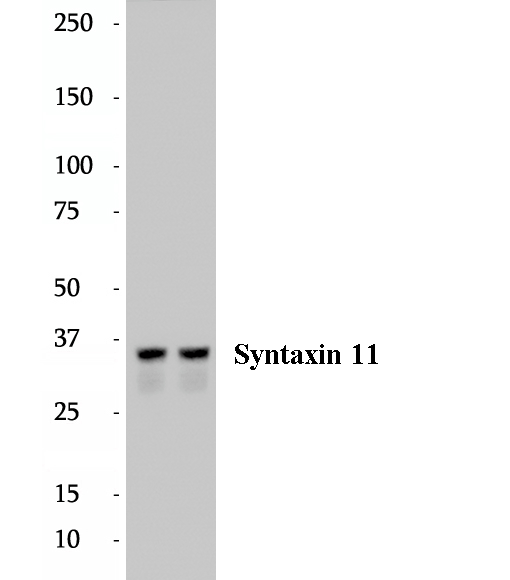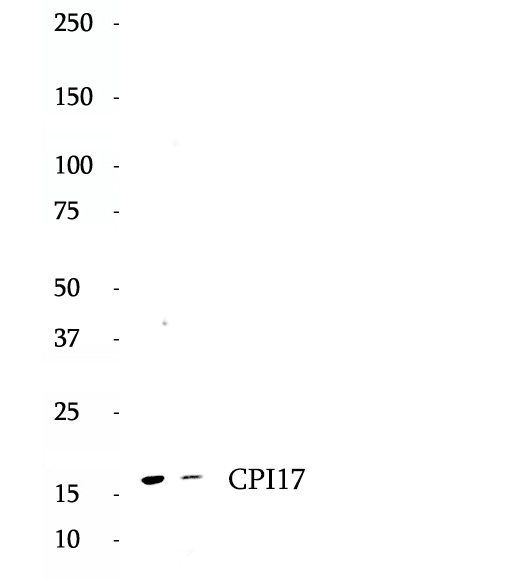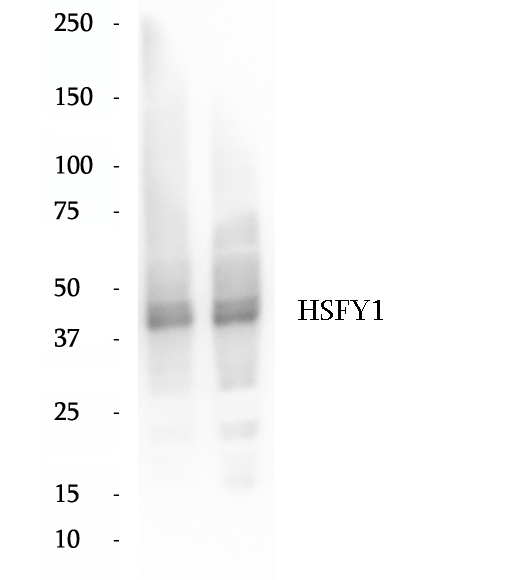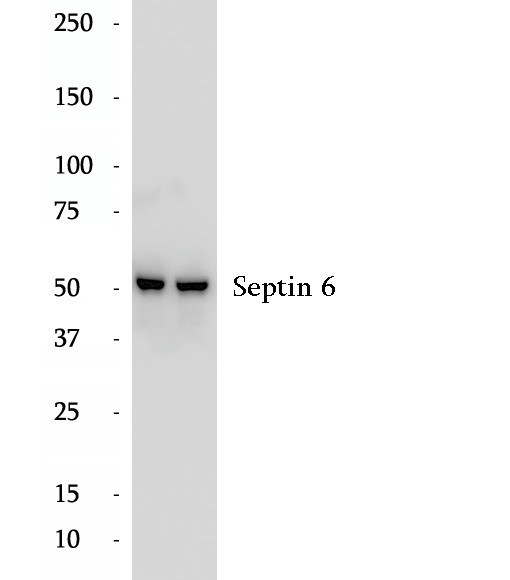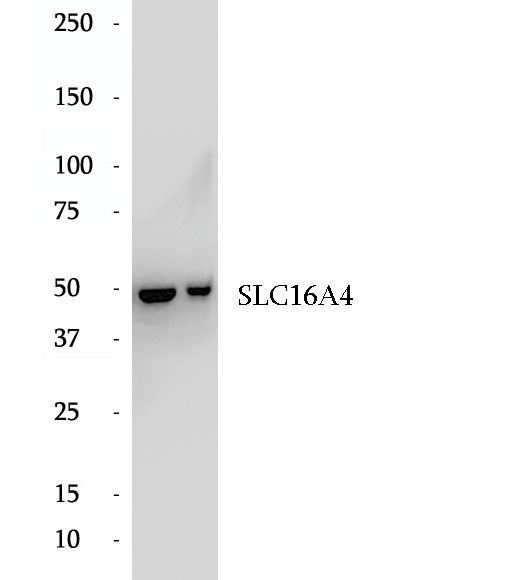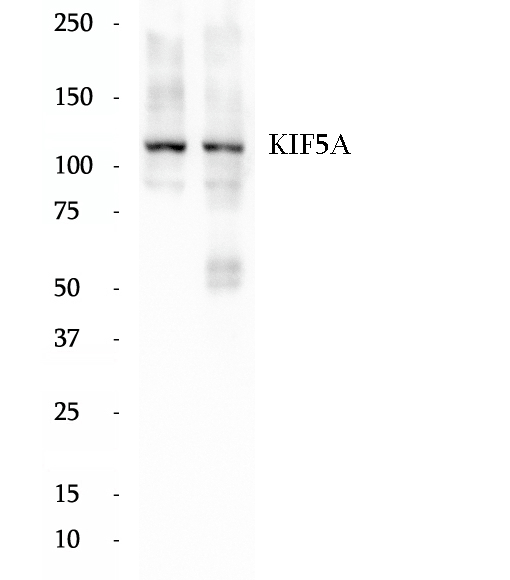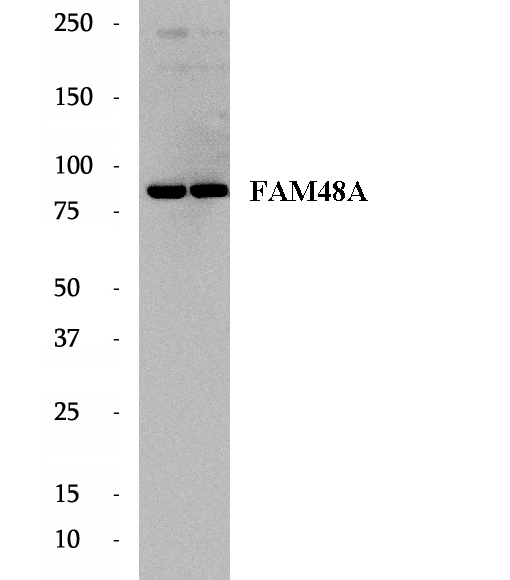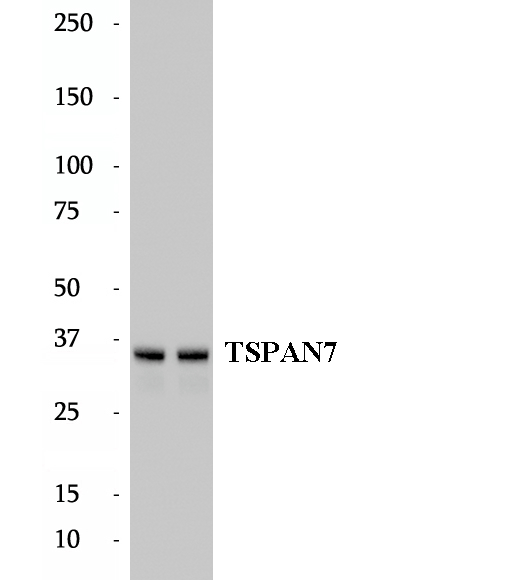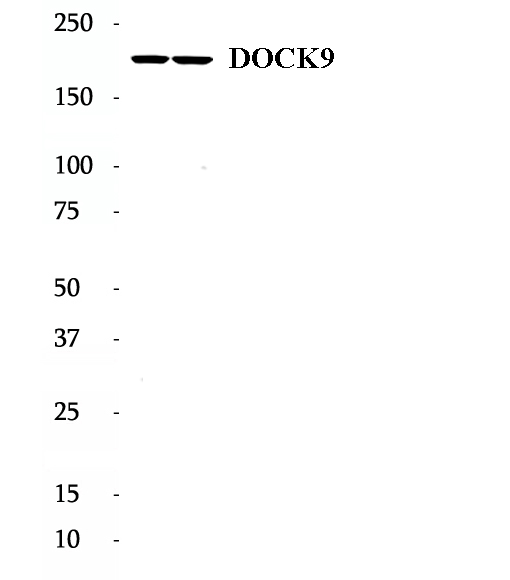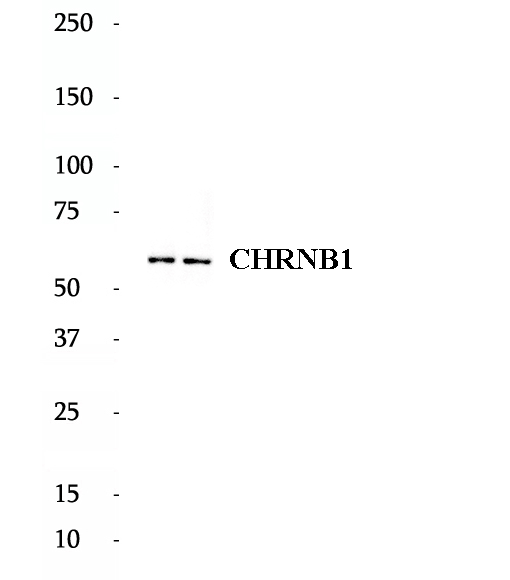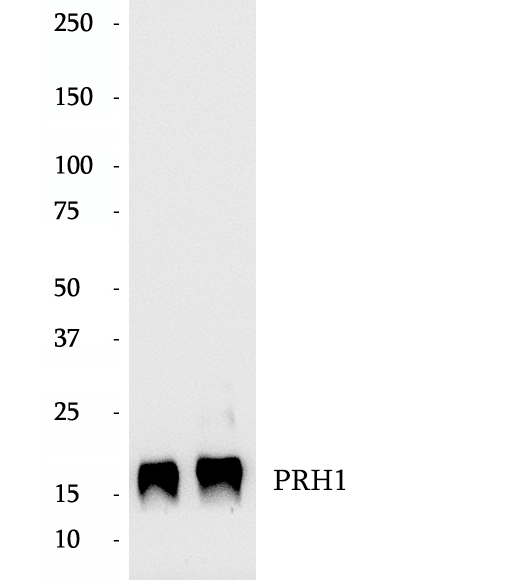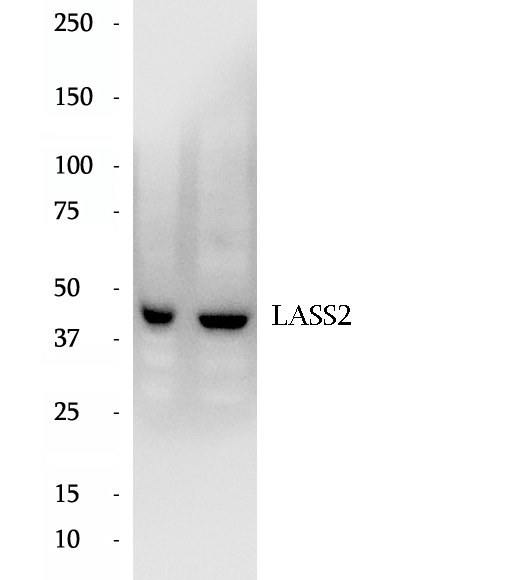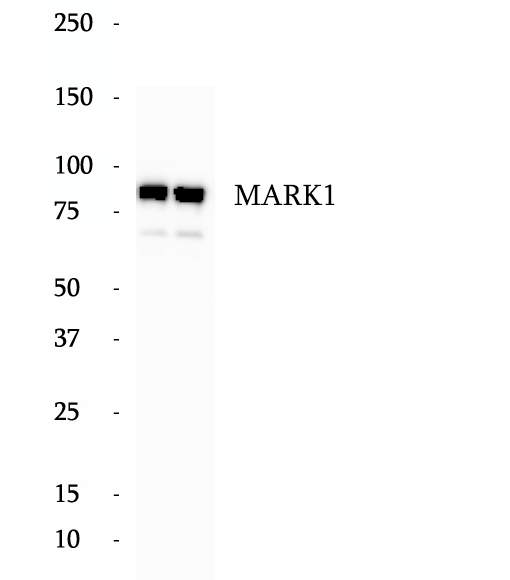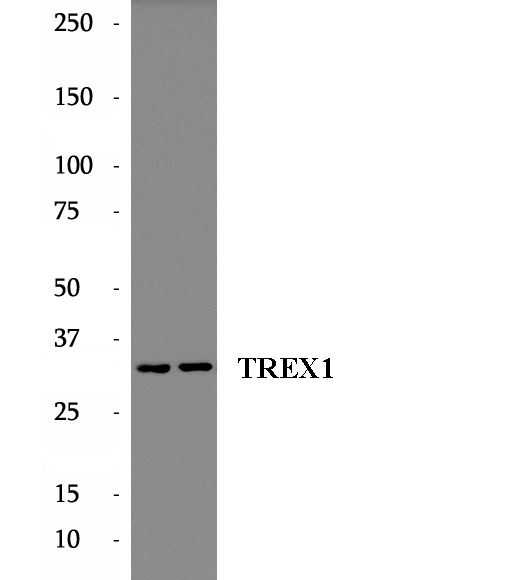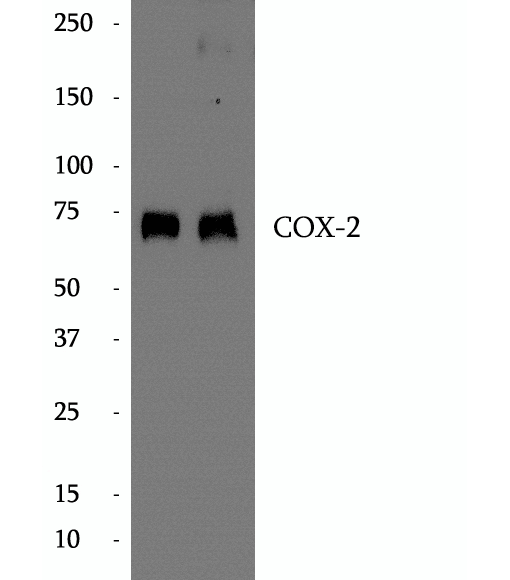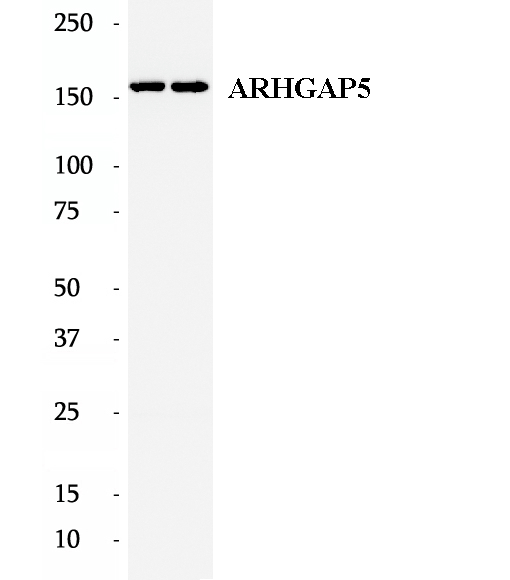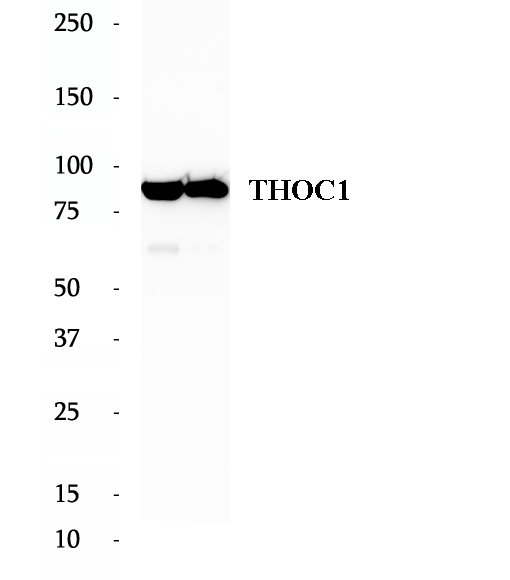|
BP64951
|
Anti-TOPBP1 antibody
|
|
|
|
|
Human DNA topoisomerase II binding protein 1 (TopBP1) contains eight BRCT motifs that are found in proteins regulating the DNA damage response, transcription, and replication (1). In addition, TopBP1 shares sequence similarity with the fission yeast Rad4/Cut5 protein and the budding yeast DPB11 protein, both of which are required for DNA damage control and/or replication checkpoint control (2,3). Phosphorylation of TopBP1 occurs in response to DNA double-strand breaks and replication blocks (2). TopBP1 forms nuclear foci and localizes to the sites of DNA damage or the arrested replication forks (2,3). Downregulation of TopBP1 leads to reduced cell survival, probably due to increased apoptosis (2). TopBP1 functions as a transcriptional coactivator by enhancing the human papillomavirus (HPV) transcription/replication factor E2 (1). In addition, the HECT-domain ubiquitin ligase, hHYD, cooperates with TopBP1 in DNA damage response (4). TopBP1 specifically interacts with the C-terminal region of topoisomerase II beta, which suggests a supportive role for TopBP1 in the catalytic reactions of topoisomerase II beta through transient breakages of DNA strands (5). The gene encoding TopBP1 maps to chromosome 3q22.2 (5).
|
|
BP64729
|
Anti-Syntaxin 11 antibody
|
|
|
|
|
Syntaxin 11 (STX11) belongs to the syntaxin family. It interacts with the SNARE proteins SNAP-23 and VAMP. STX11 behaves as an integral membrane proteindespite the lack of a traditional transmembrane domain. The detection of STX11 in human cytotoxic lymphocytes suggests that this protein could play a role in the process leading to degranulation of secretory lysosomes.
|
|
BP61069
|
Anti-CPI17 antibody
|
|
|
|
|
CPI-17 is a phosphorylation-dependent inhibitory protein for smooth muscle myosin phosphate.
|
|
BP61260
|
Anti-DCP1B antibody
|
|
|
|
|
DCP1B belongs to DCP1 family. DCP1B is a core component of the mRNA decapping complex, a key factor in the regulation of mRNA decay
|
|
BP62242
|
Anti-HSFY1 antibody
|
|
|
|
|
The HSFY gene is located in the male-specific region of chromosome Y (MSY), which is not involved in X-Y crossover events. HSFY gene is expressed exclusively in testis. HSFY is a DNA-binding protein that specifically binds heat shock promoter elements (HSE), and suggested to be implicated in spermatogenesis both in animals and humans.
|
|
BP64349
|
Anti-Septin 6 antibody
|
|
|
|
|
Septin 6 belongs to the septins family which are conserved GTP-binding proteins functioning as dynamic, regulatable scaffolds for the recruitment of other proteins. They are involved in membrane dynamics, vesicle trafficking, apoptosis, and cytoskeletal remodeling. Septin 6 also interacts with hepatitis C virus (HCV) NS5b RNA polymerase and NS5b-binding protein ( HNRNPA1) and may play a role in HCV RNA replication.
|
|
BP64440
|
Anti-SLC16A4 antibody
|
|
|
|
|
SLC16A4, also named as MCT5, is a proton-linked monocarboxylate transporter which can catalyze the rapid transport across the plasma membrane of many monocarboxylates. It has been reported that SLC16A4 is expressed in human intestine, liver and kidney.
|
|
BP62506
|
Anti-KIF5A antibody
|
|
|
|
|
Kinesin superfamily proteins (KIFs) are microtubule-based molecular motors essential for the intracellular transport of various cargos, including organelles, proteins, and RNAs. KIF5A is expressed exclusively in neurons and transports neuronal cargoes into axons and dendrites. KIF5A mutations have been associated with Charcot-Marie-Tooth Type 2, an axonal peripheral neuropathy characterized by progressive loss of peripheral sensation and muscle wasting.
|
|
BP61658
|
Anti-FAM48A antibody
|
|
|
|
|
FAM48A also named as C13orf19 or SUPT20H is a 779 amino acid protein, which belongs to the SPT20 family. FAM48A is required for MAP kinase p38 activation during gastrulation and for starvation-induced ATG9A trafficking during autophagy. FAM48A localizes in the nucleus and is highly expressed in testis, moderately in brain and pituitary gland.
|
|
BP65056
|
Anti-TSPAN7 antibody
|
|
|
|
|
TSPAN7, also named as A15, MXS1, CD231, MRX58, CCG-B7, TM4SF2, TALLA-1, TM4SF2b and DXS1692E, is a member of the transmembrane 4 superfamily, also known as the tetraspanin family. Most of these members are cell-surface proteins that are characterized by the presence of four hydrophobic domains. TSPAN7 is a cell surface glycoprotein and may have a role in the control of neurite outgrowth. TSPAN7 may be involved in cell proliferation and cell motility. It is not solely expressed in T cells, but also expressed in acute myelocytic leukemia cells of some patients. The antibody only recognize the protein TSPAN7, can't recognize the protein TSPAN6.
|
|
BP61393
|
Anti-DOCK9 antibody
|
|
|
|
|
DOCK9 is a guanine nucleotide exchange factor (GEF) that activates CDC42 by exchanging bound GDP for free GTP. Its overexpression induces filopodia formation.
|
|
BP63725
|
Anti-PLXNB1 antibody
|
|
|
|
|
Semaphorins, originally identified as axon guidance molecules, have also been implicated in angiogenesis, immunoregulation, and cancer. Plexins are main receptors for semaphorins and are thought to control many of the functional effects of semaphorins. PLXNB1 is one of the three plexin-B family members. It is a high-affinity receptor for semaphorin 4D (SEMA4D). Interaction of SEMA4D and PLXNB1 has important physiologic effects in the immune and nervous systems, and is also involved in tumor progression, especially in tumor angiogenesis.
|
|
BP60926
|
Anti-CHRNB1 antibody
|
|
|
|
|
Acetylcholine receptors (AChRs) are integral membrane proteins that respond to the binding of acetylcholine (ACh), a neurotransmitter synthesized, stored and finally released by cholinergic neurons. After binding acetylcholine, the AChR responds by an extensive change in conformation that affects all subunits and leads to opening of an ion-conducting channel across the plasma membrane. The muscle acetylcholine receptor is composed of five subunits: two alpha subunits and one each of the beta, delta, and gamma (in immature muscle) or epsilon (in mature muscle) subunits. CHRNB1 gene encodes acetylcholine receptor subunit beta (ACHRB). Mutations in this gene are associated with slow-channel congenital myasthenic syndrome.
|
|
BP63830
|
Anti-PRH1 antibody
|
|
|
|
|
Salivary acidic proline-rich phosphoprotein 1/2 is a protein that in humans is encoded by the PRH1 gene.
|
|
BP62579
|
Anti-LASS2 antibody
|
|
|
|
|
LASS2, also known as TMSG1, is a novel suppressor of human cancer metastasis. As one member of LASS family, including LASS1-6, LASS2 mRNA is at the highest level of all LASS members, and has the broadest tissue distribution, particularly abundant in the liver, kidney and brain in mice. The biological roles of LASS2 include protection from aging, hepatic INS resistance, and hepatocellular carcinoma (HCC) progression. LASS2 has been correlated with the degree of invasion and recurrence of carcinomas of the prostate, liver, breast and bladder.
|
|
BP62744
|
Anti-MARK1 antibody
|
|
|
|
|
MARK1, also named as MAP-microtubule affinity regulating kinase 1, which form a subfamily of the calcium/calmodulin-dependent protein kinase (CAMP) group of kinases.It is involved in cell polarity by phosphorylating the microtubule-associated proteins MAP2, MAP4 and MAPT/TAU at KXGS motifs, causing detachment from microtubules, and their disassembly. MARK1 also act as a regulator of the neuronal migration and Wnt signaling pathway.It has 3 isoforms which molecular weight is 89,84,72 kDa. This antibody may detect all of the isoforms.
|
|
BP64994
|
Anti-TREX1 antibody
|
|
|
|
|
TREX1 (three prime repair exonuclease 1), also known as trophoblast expressed 1, CRV, AGS1, AGS5, DRN3, HERNS or DNase III, is a member of the exonuclease superfamily and belongs to the TREX family. TREX1 may play a role in DNA repair. TREX1 is expressed in thymus, spleen, liver, brain, heart, small intestine and colon. Mutations or defects in the gene encoding TREX1 have been associated with a variety of diseases, including systemic lupus erythematosus, chilblain lupus (CHBL), Aicardi-Goutieres syndrome type 1 (AGS1) and type 5 (AGS5).
|
|
BP61049
|
Anti-COX2 antibody
|
|
|
|
|
COX2 (Prostaglandin G/H synthase 2, PTGS2) mediates the formation of prostaglandins from arachidonate. Its subunit structure is homodimer. The fully N-glycosylated PTGS2 is 72-74 kDa and the aglycosylated is 66 kDa. It also expresses a band of 39 kDa after unspecific cleavage. The 50 kDa band of fragmented PTGS2 has also previously been detected in AD brains.
|
|
BP60287
|
Anti-ARHGAP5 antibody
|
|
|
|
|
ARHGAP5, also named as RHOGAP5 and p190-B, is GTPase-activating protein for Rho family members. It may play a role in the reduction of the p21rasGTPase-activating potential of p120GAP. ARHGAP5 can be directly phosphorylated on a single identified tyrosine residue by the activated INS and IGF-1 receptors. It also has been shown to be tyrosine phosphorylated by cSrc and vSrc. Additionally the GAP domain of ARHGAP5 is shown to attenuate signal transducing activity of Rac, Rho and CDC42. The antibody is specific to ARHGAP5.
|
|
BP64846
|
Anti-THOC1 antibody
|
|
|
|
|
THOC1 (THO complex subunit 1), also known as Tho1, P84, HPR1 or P84N5, is a 657 amino acid nuclear matrix protein and is evolutionarily conserved from yeast to humans. THOC1 contains one death domain and is a component of the heteromultimeric THO/TREX (transcription/export) complex along with THOC2, THOC3, BAT1 and ALY. The THO/TREX complex is recruited to transcribed genes and travels along with RNA polymerase II (Pol II) during elongation, coupling elongating Pol II with RNA splicing and export factors. THOC1 is expressed at high levels in breast cancer cells and at relatively low levels in normal epithelia. A reduction of THOC1 in cancer cell lines results in promoted cancer cell apoptosis and reduced cell proliferation. This suggests that cancer cells are dependent on the high levels of THOC1 expression and therefore THOC1 may be a good target for cancer therapy. This antibody recognizes the 84kd THOC1 protein.
|
